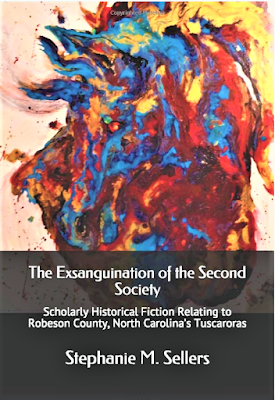How dialect, maps, and timeline of NC Tuscaroras' historic copper mines furthers the paper genocide

Dialect: Early Explorers Lewis and Clark named rivers and subsequently introduced terms used to identify people living nearby, just like surveyor Lawson and other transcribers. This contributes to some identity misconceptions. The Iroquoian language and Algonquian language were not easily distinguished from one another and that also led to misconceptions. As explorers and settlers translated what they understood, misspellings occurred. All these things contribute to a lesser history of the North Carolina Tuscaroras. For example, the country of India has over 17 dialects. I challenge any American who does not know the language to go there, attempt to correctly distinguish their dialects, and return to correctly transcribe who said what and which dialect was spoken. I’ll give you two years, ten months, and four days – same as Lewis and Clark, to cover the entire country on foot, canoe and horseback. William Byrd names his three hunters Tuskeruda Indians in his work The Westover M



